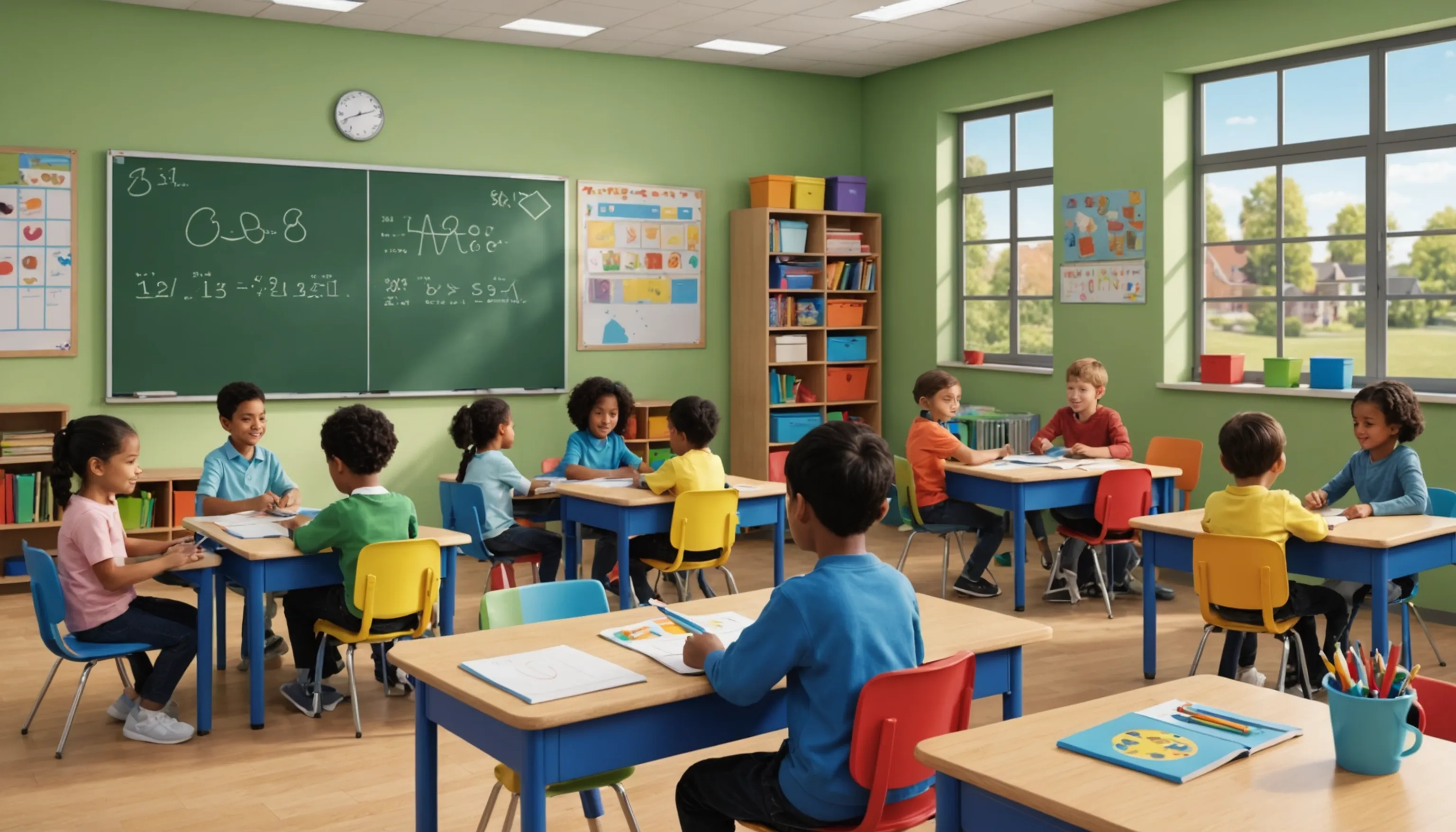Duolingo is Primarily Used by Adults for Self-Motivation
 HvWHenry van Wagenberg
HvWHenry van Wagenberg
Understanding the Use of Duolingo Among Different Age Groups
Duolingo has gained immense popularity across various age groups, primarily due to its user-friendly interface and gamified learning approach. Adults often gravitate towards Duolingo because of their intrinsic motivation to learn a new language, fitting their studies into busy schedules. In contrast, children may struggle with the platform, as they require more stimulation and engaging content to maintain their interest.
Understanding these differences is crucial for parents and educators who wish to foster effective language learning experiences for both adults and kids.
Why Adults Prefer Duolingo for Language Learning
Adults increasingly turn to Duolingo for language learning due to several compelling reasons that cater to their unique needs and lifestyles.
Firstly, the platform offers unparalleled flexibility. Adult learners often juggle multiple responsibilities such as work, family, and personal commitments. Duolingo’s mobile app allows them to study at their convenience, whether during a commute or at home, making it easier to fit language learning into their busy schedules.
Secondly, self-motivation plays a crucial role in adult education. Adults are often driven by personal goals, whether for travel, career advancement, or cognitive stimulation. This intrinsic motivation empowers them to engage with the app consistently, leading to effective learning outcomes.
Moreover, Duolingo employs a gamified approach, incorporating elements like points, levels, and rewards, which helps keep adult learners engaged. This approach not only makes learning fun but also encourages users to return regularly to practice.
Additionally, the platform is free, making it accessible to a broad audience. Adults appreciate the opportunity to learn without the financial burden of traditional classes.
Finally, Duolingo offers a variety of languages, catering to diverse interests. Whether someone wants to learn Spanish for travel or Mandarin for business, Duolingo provides the resources needed to achieve these goals. This tailored experience makes it an ideal choice for adult language learners.
The Role of Self-Motivation in Adult Learning
Self-motivation is a critical component in the realm of adult learning, especially when it comes to language acquisition through platforms like Duolingo. Unlike children, who may be driven by external factors such as parental guidance or classroom settings, adults typically engage in learning based on their personal desires and goals.
This intrinsic motivation manifests in various ways. For many adults, learning a new language serves multiple purposes—be it for career advancement, travel, or simply a passion for culture. This clear understanding of their objectives fuels their commitment, making them more likely to invest time and effort into their studies.
Furthermore, self-motivated learners tend to be more resourceful. They actively seek out additional materials and experiences to enhance their learning. For instance, an adult learning Spanish on Duolingo might supplement their lessons with podcasts, movies, or conversation groups, creating a richer learning environment.
Another aspect is the accountability that comes with self-motivation. Adults often set personal benchmarks and milestones, such as completing a certain number of lessons each week or engaging in conversations with native speakers. This structured approach not only keeps them focused but also provides a sense of achievement as they progress.
Finally, self-motivation allows for a more personalized learning experience. Adults can choose how and when they study, tailoring their journey to fit their lifestyle, preferences, and learning pace. This autonomy is vital in maintaining their interest and enthusiasm for language learning.

Flexibility and Convenience for Adult Learners
Flexibility and convenience are two key factors that make Duolingo an attractive option for adult learners seeking to master a new language. Adults often lead busy lives, balancing work, family, and personal commitments, which can make traditional language classes challenging to fit into their schedules. Duolingo addresses this issue by providing a platform that allows users to learn at their own pace and on their own terms.
One of the most significant advantages of Duolingo is its mobile app, which enables learners to study anytime and anywhere. Whether waiting for a bus, on a lunch break, or relaxing at home, adults can easily access lessons and practice exercises. This on-the-go learning experience empowers users to integrate language study into their daily routines, making it more likely they will stick with it over time.
The bite-sized lessons offered by Duolingo are designed to be completed in just a few minutes, making them manageable for busy adults. This micro-learning approach allows learners to make progress even with just a few minutes of spare time each day. Such flexibility helps maintain motivation and keeps the learning process enjoyable.
Moreover, the platform's gamified elements, including points, levels, and streaks, provide an engaging and rewarding experience that encourages consistent practice. Adults appreciate the convenience of tracking their progress and setting personal goals without the pressure of formal classes.
In summary, the flexibility and convenience offered by Duolingo make it an ideal choice for adults looking to learn a new language amidst their busy lives.
Challenges Kids Face with Duolingo
While Duolingo offers a fun and engaging way to learn languages, kids often face specific challenges when using the platform. One significant issue is the lack of necessary stimulation that younger learners typically require. Children often need interactive and visually appealing content to maintain their interest.
Additionally, the self-directed nature of Duolingo can be overwhelming for kids, who may struggle to stay focused without guidance. Limited feedback and encouragement can also hinder their motivation. As a result, while Duolingo can be a helpful tool, it may not fully address the learning needs of children.
The Need for More Stimulation in Learning
Children often require more stimulation in their learning environments compared to adults. This need for engagement is particularly pronounced when using language learning apps like Duolingo. Here are several reasons why stimulation is crucial for effective learning in children:
- Attention Span: Kids generally have shorter attention spans. They thrive in interactive settings that capture their interest and keep them focused.
- Variety of Learning Styles: Children learn differently; some may be visual learners, while others might benefit from auditory or kinesthetic activities. A one-size-fits-all approach may not be effective.
- Gamification: While Duolingo utilizes gamified elements, it may not be enough for younger learners. They often benefit from more dynamic and varied games that encourage active participation.
- Social Interaction: Kids often learn best in collaborative environments where they can interact with peers. Duolingo, being a solo activity, may lack the social component essential for engaging young learners.
To address these challenges, parents and educators can consider incorporating additional stimulating activities into the learning process. Some effective strategies include:
- Using interactive games that encourage teamwork and problem-solving.
- Integrating multimedia resources like videos, songs, and stories to make learning more engaging.
- Encouraging group activities, such as language clubs, to promote social interaction and collaboration.
By providing a more stimulating learning environment, children can enhance their language skills while enjoying the process.

How Kids Learn Differently Than Adults
Understanding how kids learn differently than adults is essential for creating effective educational experiences. Children and adults have distinct learning styles, cognitive abilities, and emotional needs that significantly impact their language acquisition. Here are some key differences:
- Cognitive Development: Children are in the process of developing their cognitive skills, which are not yet fully matured. They often think more concretely and may struggle with abstract concepts compared to adults, who can grasp complex ideas more easily.
- Learning Styles: Kids tend to learn best through play and hands-on experiences. They thrive in environments that offer opportunities for exploration and creativity, whereas adults often prefer structured learning with clear objectives.
- Attention Span: Children generally have shorter attention spans than adults. They may find it challenging to stay focused on a single task for an extended period, making interactive and varied activities essential for maintaining their interest.
- Social Learning: Kids are inherently social learners. They benefit from collaboration and interaction with peers, which helps reinforce their understanding of concepts. Adults, on the other hand, may be more comfortable with independent study.
To accommodate these differences, educators and parents can implement strategies that cater to children’s unique learning needs:
- Incorporate games and playful activities that make learning enjoyable.
- Utilize multimedia resources that engage multiple senses.
- Encourage group work and discussions to foster social interaction.
By recognizing these differences, we can create more effective and engaging learning environments for kids.
Engaging Kids with Interactive Learning Methods
Engaging kids with interactive learning methods is essential for effective education, especially in language acquisition. Children are naturally curious and thrive in environments where they can actively participate. Here are some effective strategies to capture their interest:
- Gamified Learning: Incorporate games that encourage competition and teamwork. Platforms like Duolingo use this concept, but additional interactive games can enhance engagement.
- Hands-On Activities: Use crafts, role-playing, and real-life scenarios to make learning practical and enjoyable. For example, acting out a restaurant scene can reinforce vocabulary.
- Technology Integration: Utilize apps and tools that promote interactive learning, such as language learning games or virtual reality experiences.
By using these methods, parents and educators can create a stimulating environment that fosters language skills while keeping kids motivated and excited about learning.
Alternatives to Duolingo for Kids
While Duolingo is a popular choice for language learning, there are several alternatives that may better cater to the needs of children. These alternatives often provide more interactive and engaging experiences that can enhance language acquisition.
- Rosetta Stone Kids: This program offers an immersive learning environment for young learners. It uses interactive stories and games that make language learning fun while developing essential skills.
- Memrise: Memrise focuses on vocabulary acquisition through engaging visuals and spaced repetition. Its gamified approach includes fun challenges that keep kids motivated and encourages them to learn new words effectively.
- Busuu: Busuu offers a language learning platform that combines courses with social interaction. Kids can practice their skills by communicating with native speakers, which fosters a sense of community and real-world application.
- Little Pim: Designed specifically for young children, Little Pim uses animated videos and interactive activities to introduce new languages in an entertaining way. The program is especially effective for preschoolers and early elementary students.
- Language Learning Apps like FunEasyLearn: These apps offer engaging games and quizzes tailored to kids, making learning a new language enjoyable and accessible.
By exploring these alternatives, parents and educators can find the best fit for their children's learning styles and interests, ultimately enhancing their language learning experience.
Creating a Stimulating Learning Environment
Creating a stimulating learning environment is crucial for fostering effective language acquisition in children. A well-designed space can significantly enhance engagement and motivation, enabling kids to thrive in their learning journey. Here are some strategies to consider:
- Interactive Learning Stations: Set up different areas focused on various aspects of language learning, such as reading, writing, speaking, and listening. Each station can have games, books, and activities that encourage exploration and active participation.
- Incorporate Technology: Utilize tablets and computers equipped with educational apps and online resources. These tools can provide interactive experiences that cater to different learning styles, making language acquisition more dynamic.
- Visual Aids: Use posters, flashcards, and charts that display vocabulary, grammar rules, and cultural elements. Visuals can help reinforce concepts and make learning more appealing.
- Encourage Group Activities: Promote collaboration by organizing group projects and language games. Working together fosters social interaction and helps kids learn from one another.
- Flexible Learning Spaces: Create a comfortable and inviting atmosphere with cozy reading nooks, colorful decor, and sufficient lighting. A positive environment can inspire curiosity and exploration.
By implementing these strategies, parents and educators can cultivate a stimulating learning environment that supports children's language development, making the process enjoyable and effective.
